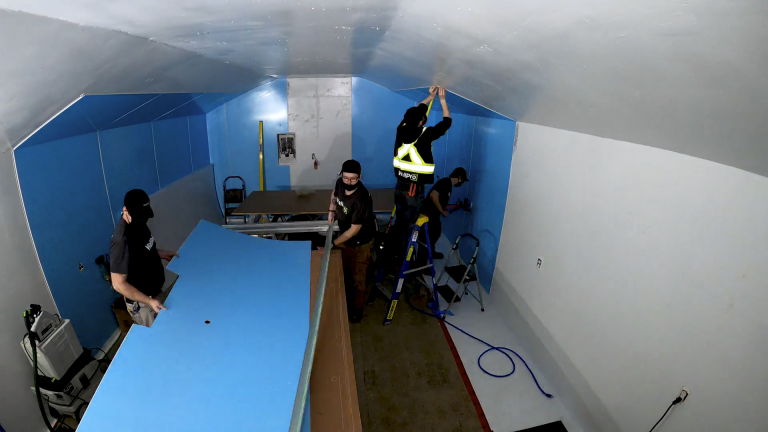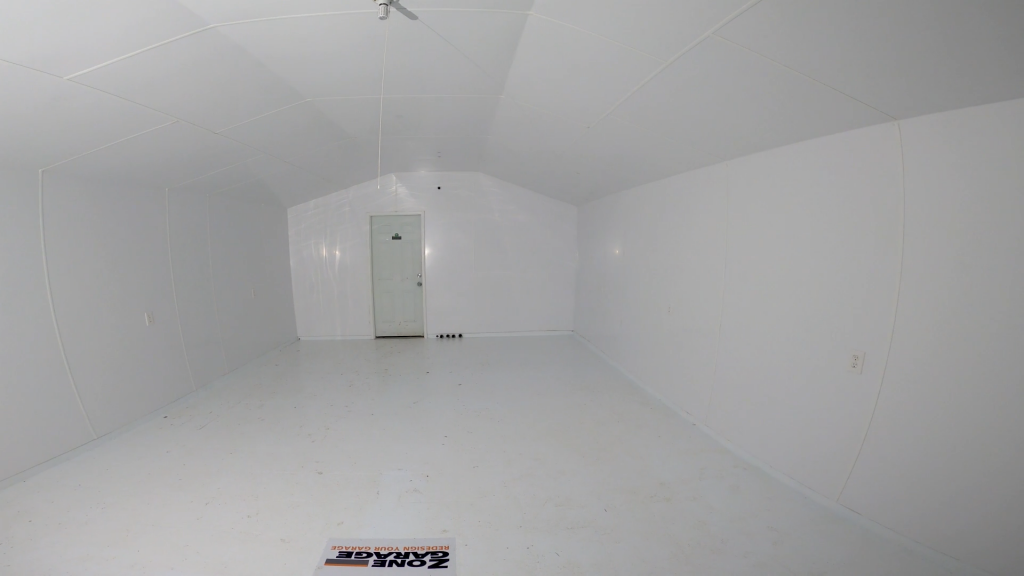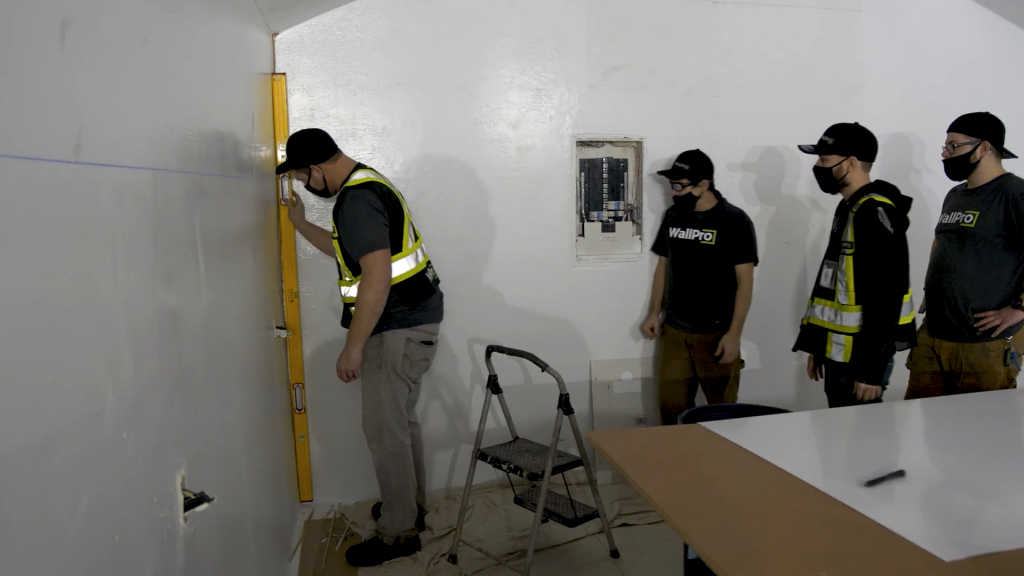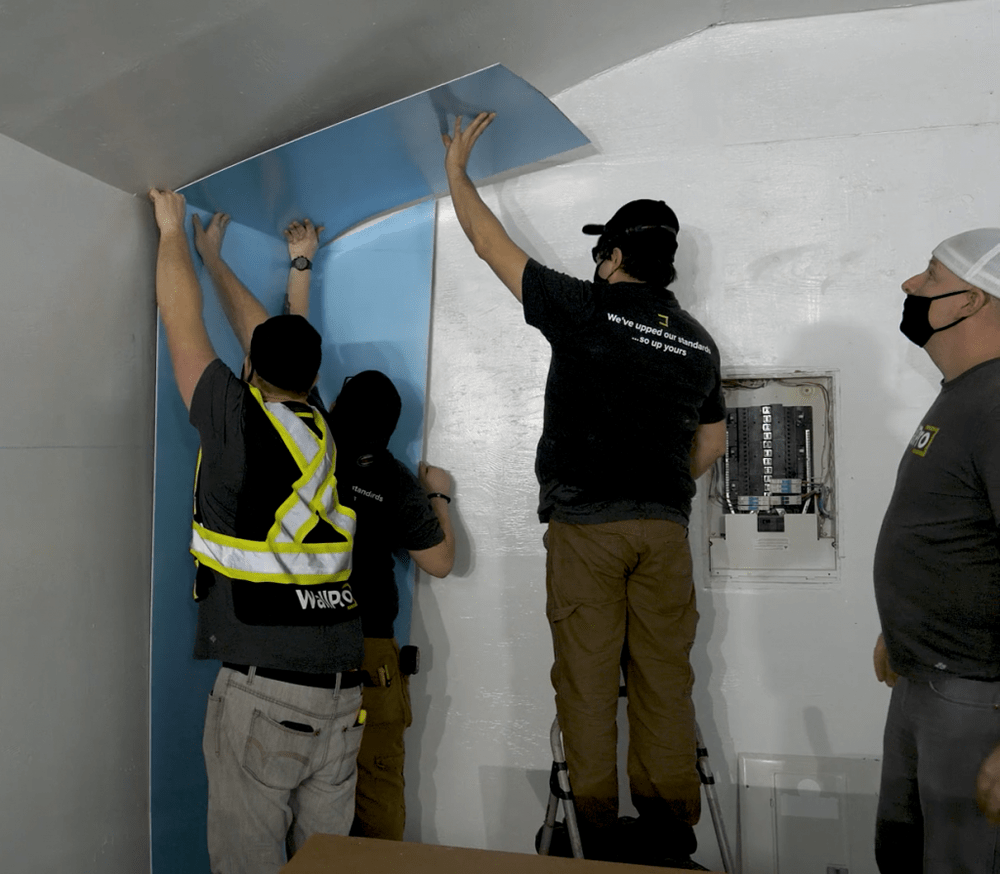In any cannabis grow room setup, the walls and ceiling are a critical element of the success of your indoor garden. Whether you’re a home grower or a large-scale cultivator, your space’s walls not only contain your garden but can help improve the quality of your yield.
Our guide to setting up the perfect indoor garden focuses on the walls and ceiling of your space. From insulation to light reflectivity, we cover the most important aspects you should consider when installing a functional and sleek wall system for optimal cannabis cultivation.
Why Walls and Ceilings are So Important
Inside of any indoor grow space, growers must maintain an optimal environment for cannabis plant growth. Part of that involves creating a seamless and highly reflective environment to prevent plant diseases and improve cannabis bud growth, respectively.
Closing all openings on a wall prevents moisture and pathogens from growing within these cracks, creases, and holes. Setting up a completely seamless room that won’t absorb any humidity, chemical spills, or bacteria is important to the health of your plants.
In the long run, investing in a slick and durable surface can make your grown room easy to clean. It is as easy as turning on the hose and spraying it all down to get a deep clean of your space. All you’ll have to do is wipe down the edges with a cloth and you’re good to go.
On your walls, the type of reflective material you choose will determine how well your lights bounce off the walls and hit every angle of your canopy. Since light is critical to the photosynthesis process of plants, it is important to reflect the light beaming off the sides.
Not only will you increase the efficiency of the grow lights you already have, but you will also reduce the need for multiple lights, which will save you energy and money. The right type of reflective material can increase the amount of light your plants get by up to 30%!

Choosing the Right Reflective Material For Your Grow Room
As far as the different types of reflective surfaces available, you have plenty of choices to choose from that vary in price, quality, durability, and reflectivity.
Home growers can get away with some cheap white paint and call it a day, but commercial growers look for the following characteristics in their reflective material:
Bright white surface
Class A fire rating, non-flammable
Low maintenance; easy to clean
Moisture resistant to prevent mold and mildew growth
Impact resistance for durability against marks and scratches
Pro tip: Investing in a light meter can help you measure your light reflection. It allows you to easily compare multiple different material options. Use samples of the materials on a board to test out their light reflectivity using your light meter.

Flat White Paint
Home growers or those with a limited budget can opt to go with a flat white paint to increase the reflectivity of their grow room. Whether you’re growing in a closet or a large room, flat white paint can deliver an impressive light reflectivity between 85% to 95%.
Flat white paint is affordable, easy to paint, and easy to clean. It also won’t produce any extra heat. And, since you don’t have to apply any panels over the wall, you will not get air pockets or hotspots.
If you’re going with flat white paint, experts recommend adding a fungicide for extra protection. In addition, don’t go for glossy or eggshell whites since they are not as reflective as flat white paint.
Semi-gloss paint can reflect between 55% to 60% of light, a significant drop from flat white paint. Titanium white paint is the best option here since it is the most reflective. This option is more costly, so only use this if you have a larger budget.
After painting your walls, the paint can inevitably fade over time. Its reflective capacity may reduce requiring touch ups or a complete replacement.
Poly Plastic
Also known as panda plastic, this black and white polymer material comes in a variety of thicknesses. Of course, bigger thicknesses will improve its longevity and insulation. Panda plastic is relatively affordable and has a light reflectivity between 85% to 95%.
Just make sure to account for the increased heat caused by its plastic material. You can keep your plants at a reasonable distance and install a ventilation system for temperature regulation. Its white side reflects light while its black side blocks light.
Experts recommend a 6 mil thickness of panda plastic for more longevity and light blockage than a thinner form. Set up can be done with nails, tape glue, or other strong adhesive material.
Orca Grow Film
Orca Grow Film is made from high-density threads of reflective plastic that looks like the skin of an orca whale. Its unique bonded composition of microfibers and microscopic pores produces a highly reflective material that virtually eliminates hot spots.
Its diffuse reflection allows the light to hit evenly across the room. Since this material can reflect between 90% and 94% of light it is more expensive than most other reflecting materials. Just make sure to have the proper ventilation system to offset the heat it produces.
Foylon
Foylon is very similar to mylar, except this material is slightly more durable than its counterpart. It also comes at a slightly higher price. Made out of spun polyester fiber, foylon can be placed on your walls with a foil laminate as its backing.
This material has a light reflectivity of up to 95% and won’t easily fade. That means that foylon can last you for a long time without needing frequent replacement.
Some growers have chosen to attach foylon to their walls using velcro for easy setup and teardown. They have found that this method can reduce tears, creases, and bends.
Mylar
Mylar is the most popular reflective material due to its ability to reflect up to 97% of light back onto plants. Mylar comes in a variety of thicknesses ranging from 1mm to 2mm.
Keep in mind, mylar can produce a lot of radiant heat, so you’re going to need a fan or an excellent ventilation system to account for the extra heat production.
In addition, cleaning mylar can be hard for some. However, replacement is affordable. Experts recommend investing in a thickness higher than 1 mm, since thin mylar can increase the risk of creases and tears, which lower the reflectivity of the surface.
Similar to foylon, velcro can also be used to attach mylar onto walls.
PVC Panels
PVC wall panels are becoming one of the most popular choices for commercial grow rooms. Also used in medical settings and food processing plants, these heavy-duty and bright white PVC panels are very resistant to absorption in rooms with high humidity levels.
They are able to withstand wear and tear for many years and require minimal maintenance. In addition, PVC panels are able to naturally reflect light. They’re not just for professional growers either. Home growers can use this material to optimize their grow room setting.
Set-Up Tips and Tricks
From the start of your wall and ceiling installation for your indoor grow facility, you want to ensure that the wall surface does not have any bumps or holes. Start by repairing these first to get a smooth surface. Any major defects in the structure will not allow for the proper installation of the wall panel systems.
When setting up your grow room walls, consider the heat production and insulation of the material. Ideally, you want your plants close to the reflective material to get its reflected light but not so close that they can become overheated from the harsh artificial lighting. If necessary, invest in a ventilation system to regulate temperature.
If possible, hire a professional installer to set up your wall panels to avoid any wrinkles and creases, which can trap heat if the panels are not set up correctly.
In addition, you must ensure that you install a floor-to-wall cove base to prevent any moisture or bacteria from seeping into the wall openings. This creates a seamless grow room environment without microbes.
At all costs, avoid using aluminum foil or mirrors as your reflective materials. While they can be used to increase reflection, they are not very effective. These materials have less than 50% reflectivity.
Go Behind-the-Scenes of the Cannabis Industry with Growing Exposed
Stay up-to-date with the latest cannabis growing techniques. Follow Growing Exposed’s Youtube channel for a rare look into the minds and gardens of the most innovative cannabis growers and cannabis experts in the world.









